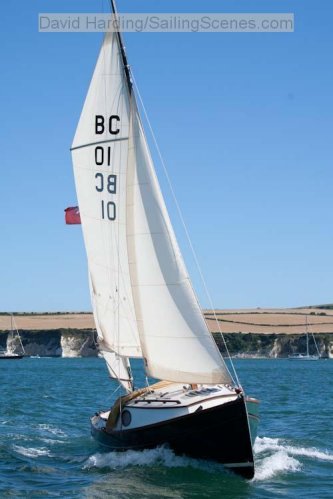I have done a bit further work shaping the template to the outboard opening. I don't think I will get it any better. The next stage is to cut it out of some 18mm marine ply, which I have yet to order. I realised as I was fitting it under the engine that I was sliding it in and out quite easily as a single piece, so I am not going to cut it in half and fit hinges. I am going to keep it in one removable piece, which is held down by a central cross piece which twists to go under a a pair of catch block on the sides. I have raised the depth sounder transducer which was sticking out further after I removed the surrounding plywood which held the flaps in place. I just cut out the bit of that plywood which had the hole for the transducer in it and fitted it on top of the floor, rather than underneath. The transducer is now flush with the bottom of the boat again. I have recovered the wooden block which holds it in anti-slug copper tape. I put some on two years ago and it really works. I only replaced it because it became loose as I fiddled with the unit.
In the cabin I have been working up some distracting paintings to keep me company on long nights at anchor. This one was done on six small panels so that it could fit the curve of the cabin side. I think she looks quite fine. I don't realy go for nautical pictures in a boat. You need something to take your mind off the mess you have got yourself into.
Subscribe to:
Post Comments (Atom)



Naughtycal pictures?
ReplyDelete:o) We need to see the model to see if the likeness is any good...!
DeleteNot getting the blanking plate - I'm guessing you have room enough in the well to lift the outboard shaft clear of the water, then you can put in the blanking plate - but what about when the engine is down??? Having removed the rubber/plastic strips aren't you going to get bad/worse sloshing of water???
The likeness is pretty good!
ReplyDeleteWhen the engine is down, there will be no blanking plate, but I'm not greatly bothered by that. It is getting maximum speed sailing that I want. The flaps twisting round the engine shaft must have created quite a lot of turbulence in any case. I might make a second plate that fits round the engine shaft, but I doubt it. Partly it would be a nuisance, but also I wouldn't want the engine held down and not able to kick up. I hit the bottom far too often for that.
The problem with blanking plates that are not 100% sealed is that the well holds a lot of water that sloshes around whilst sailing. One tip which comes from a boat with an outboard well and blanking plate (a Hunter 707 in fact) is to create a hole in the plate to act as a mini self-bailer. On the 707 the hole was at the back of the plate and angled about 60/70 degrees off the vertical. With a little bit of filler to create a fairing at the front of the hole (on the underside) the suction effect of a self bailer is effectively recreated. Depend on how steeply you floor goes you may want to have the bailing hole at the front.
ReplyDeleteMight be worth a go.
Richard
The well fills with water as it is, so I don't think the sloshing will be any worse with a faring plate. I had though of fitting a self bailer in it to drain the well, but I'l wait and see how it works in practice. There is a gap right at the stern, and it is possible that it will self drain through that as it is. In the mean time, I need to get the plywood to make the final plate.
ReplyDelete